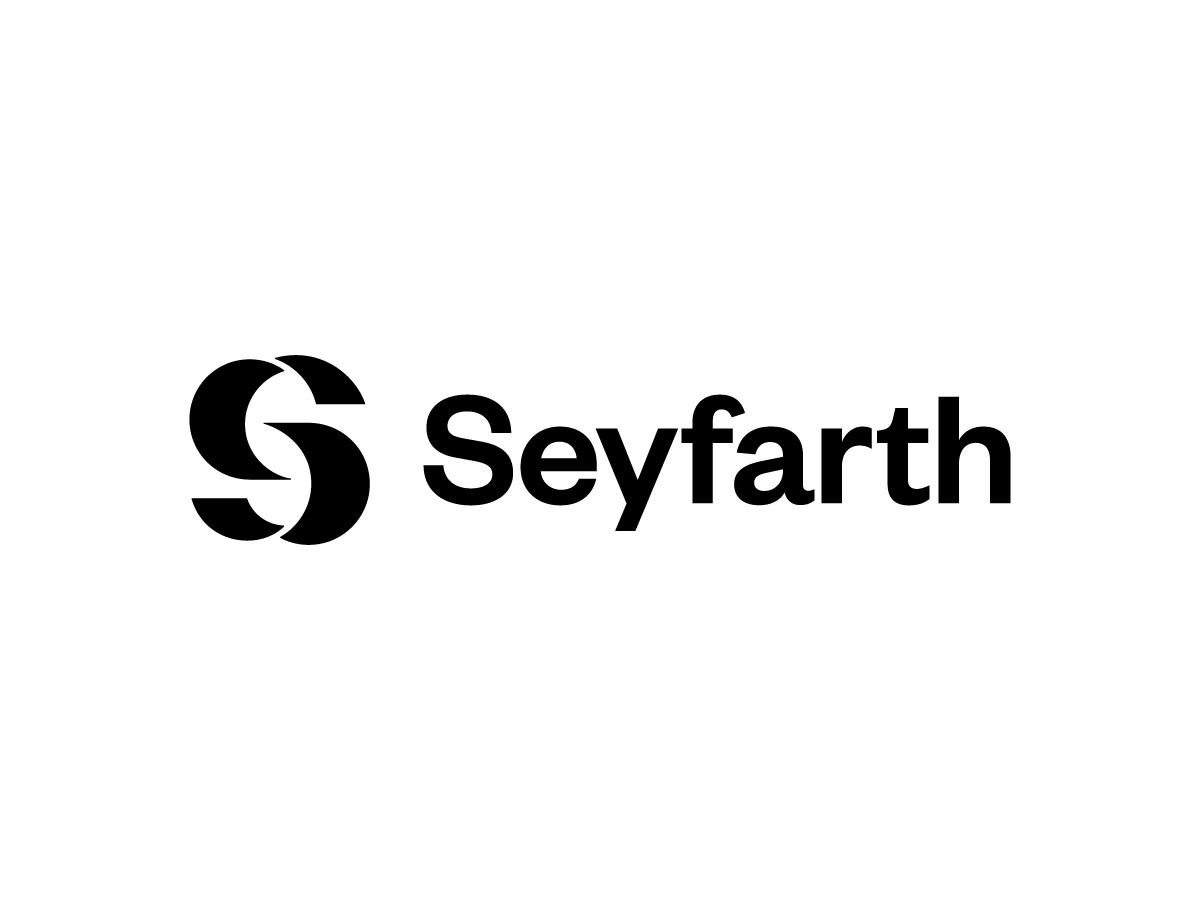Apple Watch Patent Wars Create a Defensive Roadmap for ITC Respondents
“Apple’s tactics provide a useful roadmap for litigants who face the specter of an exclusion order threatening to bar key products from the United States and who are unable or unwilling to negotiate a settlement.”
Late last year, , the United States International Trade Commission (ITC) announced that it would issue a limited exclusion order (LEO) and cease and desist order (CDO) against Apple, Inc. prohibiting Apple from importing and selling its Apple Watch (Series 6 and 7) products in the United States. The case was Certain Light-Based Physiological Measurement Devices and Components Thereof, Investigation No. 337-TA-1276 (“Light-Based Physiological Measurement Devices”), a “Section 337” patent infringement investigation before the ITC that was initiated by Masimo Corporation. Adding insult to injury, the ITC refused to stay these remedial orders pending appeal, putting at immediate risk continued sales of the Apple Watch in the United States. These decisions sent shock waves across both the tech industry and the legal community. The ITC meant business, and not even the Apple Watch—a massively successful consumer product marketed by a flagship U.S. company—could escape the Commission’s robust jurisdiction.
Perhaps this result should not have been as startling as it seemed at the time. For several years, against multiple adversaries, Apple had been battling a prospective Apple Watch ban on multiple fronts—including the ITC, multiple U.S. District Courts, and the United States Patent and Trademark Office’s Patent Trial and Appeal Board (PTAB). And while Apple had managed to persuade the ITC to suspend enforcement of an Apple Watch exclusion order in a prior ITC proceeding against AliveCor, Inc. initiated in 2021—Certain Wearable Electronic Devices With ECG Functionality and Components Thereof, Investigation No. 337-TA-1266 (“Wearable Electronic Devices”)—Apple would have needed to win almost every intermediate battle in these Apple Watch wars to emerge unscathed. That was a tall order under any circumstances.
But still, Apple has soldiered on, refusing to concede. Indeed, in a spirited effort to avoid or mitigate the impact of an ITC exclusion order on its Apple Watches, Apple has engaged in the full gamut of defensive maneuvers. Apple’s tactics—some of which have been familiar to experienced IP litigators, some of which have taken paths perhaps less well-trodden—provide a useful roadmap for litigants who face the specter of an exclusion order threatening to bar key products from the United States and who are unable or unwilling to negotiate a settlement. Key elements of Apple’s defensive tactics are discussed below.
Vigorous Litigation of the Public Interest Factors
Under 19 U.S.C. § 1337(e), the ITC is empowered to issue exclusion orders “unless, after considering the effect of such exclusion upon the public health and welfare, competitive conditions in the United States economy, the production of like or directly competitive articles in the United States, and United States consumers, it finds that such articles should not be excluded from entry.” These factors are typically referred to as the “public interest factors,” and in theory the statutory provision requires the ITC to consider whether such factors override a private complainant’s interest in IP enforcement. The ITC considers such factors both at the pre-institution stage and in the context of issuing a Final Determination. See, e.g., 19 C.F.R. §§ 210.8(b), (c) & 210.50(a). In practice, however, relief has rarely been withheld on this basis, and parties to Section 337 investigations often treat the public interest as an ancillary issue requiring less attention.
But in both Wearable Electronic Devices and Light-Based Physiological Measurement Devices, Apple recognized that it had potentially meritorious public interest arguments. Apple built thorough evidentiary records and argued strenuously that exclusion of the Apple Watches at issue, which include telecommunications, health and wellness, fitness tracking, and location tracking features, would be averse to the public health and welfare and harmful to U.S. consumers. Although the ITC ultimately determined to issue remedial orders in spite of Apple’s public interest arguments, it agreed to tailor those orders to permit exemptions for service, repair, and replacement of infringing Apple Watches. See generally Wearable Electronic Devices, Comm’n Op., slip op. at 70–82 (Jan. 20, 2023); Light-Based Physiological Measurement Devices, Comm’n Op., slip op. at 76–118 (Nov. 14, 2023). These exemptions were important first steps in reducing the adverse impact that any ITC remedial orders might have in the marketplace.
Filing Prompt IPR Petitions and Seeking Stays and/or Suspensions of ITC Remedial Orders
Challenging asserted patents in parallel inter partes review (IPR) proceedings before the PTAB has long been standard practice for defendants in patent infringement lawsuits. By law, IPR petitions must be filed within one year of an infringement suit having been filed in U.S. District Court. 35 U.S.C. § 315(b). Moreover, petitioning delays can cause the PTAB to discretionarily deny institution under Fintiv. See Apple Inc. v. Fintiv, Inc., IPR2020-00019, Order, slip op. at 5–6 (PTAB Mar. 20, 2020) (precedential) (Paper No. 11). But in the context of an expedited ITC proceeding—which by statute is required to conclude “at the earliest practicable time,” 19 U.S.C. § 1337(b)(1), and typically takes 15 months or less—any IPR petition must be filed absolutely immediately if a party is to have any hope of securing a PTAB decision before the ITC acts.
Apple’s tactics in Wearable Electronic Devices illustrate why. In that proceeding, AliveCor had filed its Complaint asserting claims from three different patents on April 20, 2021, and the investigation was instituted on May 20, 2021. Only weeks after the ITC’s institution, on June 9, 2021, Apple was able to file multiple IPR petitions with the PTAB seeking invalidation of the asserted claims from all three patents. Even so, the PTAB did not issue Final Written Decisions in Apple’s favor until December 6, 2022—less than a week before the ITC’s December 12, 2022, target date for completion of its investigation. See Apple, Inc. v. AliveCor, Inc., IPR2021-00970, Final Written Decision (Dec. 6, 2022) (Paper No. 43); Apple, Inc. v. AliveCor, Inc., IPR2021-00971, Final Written Decision (Dec. 6, 2022) (Paper No. 42); Apple, Inc. v. AliveCor, Inc., IPR2021-00972, Final Written Decision (Dec. 6, 2022) (Paper No. 43). This time crunch forced Apple to rush to the ITC the very next day and file an Emergency Motion disclosing the PTAB invalidations and seeking suspension of any ITC remedial orders or a stay of the investigation pending any appeals of the PTAB rulings. See Wearable Electronic Devices, Emergency Mot. to Suspend Any Remedy or Extend the Target Date and Stay Proceedings (Dec. 7, 2022).
When the ITC issued its Final Determination shortly thereafter, although it found certain patent claims valid and infringed by Apple and issued an LEO remedy barring the importation and sale of Apple Watches, it agreed with Apple that enforcement of its remedial orders should be suspended until the PTAB’s rulings were resolved on appeal. See Wearable Electronic Devices, Comm’n Op., slip op. at 85–87 (Dec. 22, 2022). AliveCor’s appeals remain pending, and the ITC’s suspension of its remedial orders remains in place.
Product Redesigns and Rule 177 Proceedings Before CBP’s EOE Branch
After the ITC issues a remedial order, the order must be enforced by the Exclusion Order Enforcement Branch (EOE) of the U.S. Customs and Border Protection (CBP). Relatedly, 19 C.F.R. Part 177 is a CBP regulation generally permitting importers or other interested parties to request a formal administrative ruling from CBP that contemplated transactions would be lawful and permitted in the future. See, e.g., 19 C.F.R. §§ 177.1–177.10 (collectively, “Rule 177 proceedings”). In the context of EOE’s enforcement of ITC remedial orders and related patent infringement issues, EOE will entertain Rule 177 requests seeking an adjudication of whether a redesigned product would be subject to an ITC exclusion order or whether it is non-infringing and thus its future importation would be permissible. EOE prefers that these proceedings be conducted on an inter partes basis, with a short period of discovery concerning the redesigned products, followed by exchanges of briefing, oral presentations, and an EOE written decision.
In Light-Based Physiological Measurement Devices, on October 26, 2023, the ITC announced that it was issuing a Final Determination finding Apple in violation of Section 337 and issued an LEO and CDO. As it had done in connection with Wearable Electronic Devices, Apple had filed numerous IPR petitions challenging Masimo’s asserted patents, but this time Apple had been unsuccessful for the most part. Thus, although Apple again attempted to stay enforcement of the remedial orders, the ITC failed to see any justification for that step and rejected Apple’s request. See Light-Based Physiological Measurement Devices, Order Denying Respondent’s Mot. to Stay Remedial Orders (Dec. 20, 2023).
But Apple had been anticipating this eventuality and had developed modifications to its Apple Watch products that, Apple contended, constituted design-arounds to the Masimo asserted patents. Accordingly, on October 27, 2023—one day after the ITC’s announcement of its remedial orders—Apple submitted a letter to CBP requesting a Rule 177 ruling that its modified Apple Watches were non-infringing and could be imported and sold. On January 12, 2024, EOE issued its Rule 177 ruling finding that the Apple Watch modifications rendered the products non-infringing and would fall outside the scope of the ITC’s remedial orders, permitting continued importation and sales in the United States. See EOE Ruling Letter, HQ H335304 (Jan. 12, 2024).This was another critical victory for Apple.
Appeals to the Federal Circuit and Accompanying Motions to Stay
In Light-Based Physiological Measurement Devices, the ITC’s LEO issued on October 26, 2023. Notably, however, the ITC also determined that it would impose no bond requirement on Apple’s continuing imports of Apple Watches during the 60-day period of Presidential review under 19 U.S.C. § 1337(j). See Light-Based Physiological Measurement Devices, Comm’n Op., slip op. at 119–23 (Nov. 14, 2023). This meant that Apple had a 60-day grace period—i.e., until December 26, 2023—before the ITC’s remedial orders would take effect against the accused Apple Watches. But after December 26, 2023, and at least until EOE approved Apple’s redesigns, Apple had a problem.
Apple appealed the ITC’s Final Determination to the Federal Circuit and, to bridge the gap between the conclusion of the 60-day period of Presidential review and the forthcoming EOE Rule 177 ruling, Apple filed two Emergency Motions on December 26, 2023 (the same day that the Federal Circuit docketed its appeal and the same day that the 60-day period of Presidential review came to an end). First, Apple sought a stay of any enforcement of the ITC’s remedial orders pending resolution of its appeal. See Appellant Apple, Inc.’s Non-Confidential Emergency Mot. to Stay Enforcement of ITC’s Orders Pending Review, Apple Inc. v. Int’l Trade Comm’n, No. 24-1285, ECF No. 7 (Fed. Cir. Dec. 26, 2023) (“Motion to Stay”). Second, Apple requested an immediate interim stay of enforcement while the Federal Circuit adjudicated the Motion to Stay (“Motion for Interim Stay”). See Appellant Apple Inc.’s Non-Confidential Emergency Mot. for an Immediate Interim Stay Pending Disposition of Mot. for Stay Pending Appeal, Apple Inc. v. Int’l Trade Comm’n, No. 24-1285, ECF No. 5 (Fed. Cir. Dec. 26, 2023).
The next day, on December 27, 2023, the Federal Circuit promptly granted the Motion for Interim Stay and directed the government not to enforce the ITC’s remedial orders on a temporary basis. See Apple Inc. v. Int’l Trade Comm’n, No. 24-1285, Order, ECF No. 19 (Fed. Cir. Dec. 27, 2023). Although the Federal Circuit later denied Apple’s Motion to Stay on January 17, 2024, see Apple Inc. v. Int’l Trade Comm’n, No. 24-1285, Order, ECF No. 33 (Fed. Cir. Jan. 17, 2024), Apple had succeeded in ensuring continued importations and sales of accused Apple Watches until after the EOE had issued its Rule 177 ruling on January 12, 2024.
Meanwhile, Apple’s Federal Circuit appeal on the merits remains pending. An Apple victory on appeal, of course, would mean that Apple’s redesigns would be unnecessary, and Apple could proceed with business as usual. Apple’s aggressive defensive tactics would have succeeded entirely.
Image Source: Deposit Photos
Author: Frank-Peters
Image ID: 29123921






